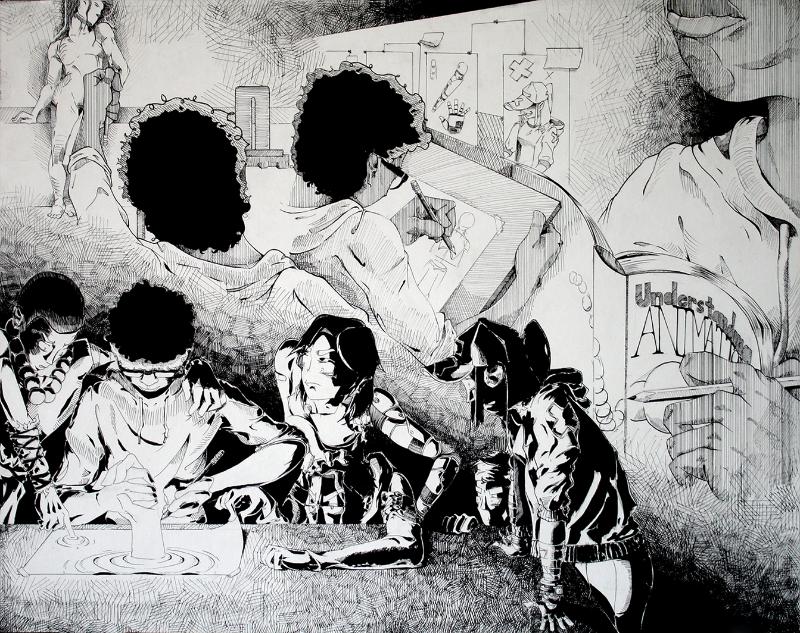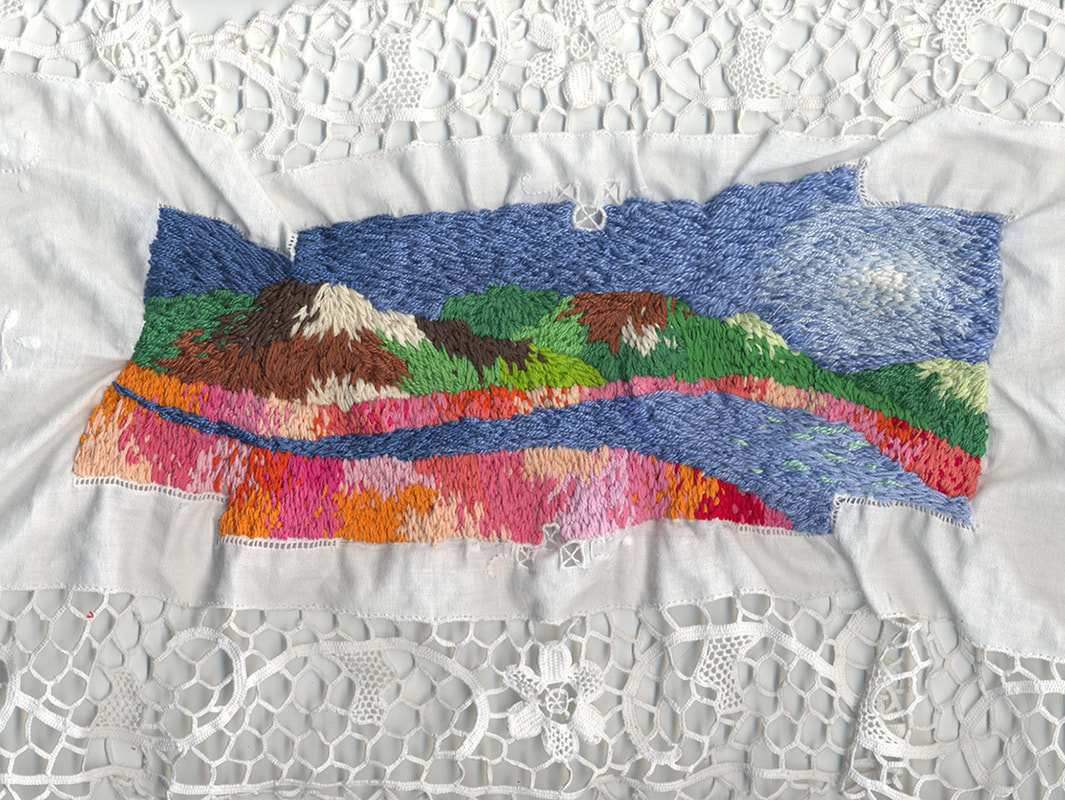Be aware of the expectations of the high quality (of concept, design, and technical craftsmanship) expected by AP and the College Board. Each "try-out" artwork is to be a FINISHED, REFINED, PORTFOLIO-QUALITY artwork suitable for your AP portfolio exam.
Refer to the College Board's Student Samples for expectations on QUALITY.
AP Portfolio Samples (including from BHS Students)
Drawing
This portfolio is designated for work that focuses on the use of mark-making, line, surface, space, light and shade, and composition. Students should consider marks that can be used to make drawings, the arrangement of marks, the materials and processes used to make marks, and relationships of marks and ideas. Students can work with any materials, processes, and ideas. Drawing (analog and digital), painting, printmaking, and mixed media work are among the possibilities for submission.
- AP Drawing Samples 2022 (scroll down on the page)
- AP Drawing Samples Archive
- Evan Kim - digital submission (2023)
- Anna Perl - digital submission (2022)
- Jack Giles - digital submission (2021)
- Michela Giordano - digital submission (2021)
- Kevin Buxton - AP Art Show (2020)
- Nicole Benjamin - AP Art Show (2020)
- Sarah Schissler - AP Art Show (2020)
- Martello Cesar - AP portfolio exam (2019)
- Marley Gainley - AP exam (2017)
- Anne Zhang - sustained investigation
- Irina Grigoryeva - sustained investigation
- Pablo Aguilar - AP exam
- Jake Ursino - Sustained Investigation
- Toula Papadopoulos - BHS Sustained Investigation
2D Art & Design
This portfolio is designated for work that focuses on the use of two-dimensional (2-D) elements and principles of art and design, including point, line, shape, plane, layer, form, space, texture, color, value, opacity, transparency, time, unity, variety, rhythm, movement, proportion, scale, balance, emphasis, contrast, repetition, figure/ ground relationship, connection, juxtaposition, and hierarchy. Students should consider how materials, processes, and ideas can be used to make work that exists on a flat surface. Students can work with any materials, processes, and ideas. Graphic design, digital imaging, photography, collage, fabric design, weaving, fashion design, fashion illustration, painting, and printmaking are among the possibilities for submission.
- AP 2D Design Samples 2022 (scroll down on the page)
- AP 2D Design Samples Archive
3D Art & Design
This portfolio is designated for work that focuses on the use of three-dimensional (3-D) elements and principles of art and design, including point, line, shape, plane, layer, form, volume, mass, occupied/unoccupied space, texture, color, value, opacity, transparency, time, unity, variety, rhythm, movement, proportion, scale, balance, emphasis, contrast, repetition, connection, juxtaposition, and hierarchy. Students should consider how materials, processes, and ideas can be used to make work that involves space and form. Students can work with any materials, processes, and ideas. Figurative or non-figurative sculpture, architectural models, metal work, ceramics, glasswork, installation, performance, assemblage, and 3-D fabric/fiber arts are among the possibilities for submission.
- AP 3D Design Samples 2022 (scroll down on the page)
- AP 3D Design Samples Archive
- Kevin Mudoola - digital submission (2021)
- A Pinterest collection
- Example AP 3D Design portfolio with fashion emphasis - score 5
- Youtube introduction from an AP 3D class
Make each drawing, design, or sculpture portfolio-worthy. Concentrate on design principles and good composition, mark-making, technique, and expression.
As is always expected, spend AT LEAST 3 - 5 hours on your project each week.


 RSS Feed
RSS Feed
